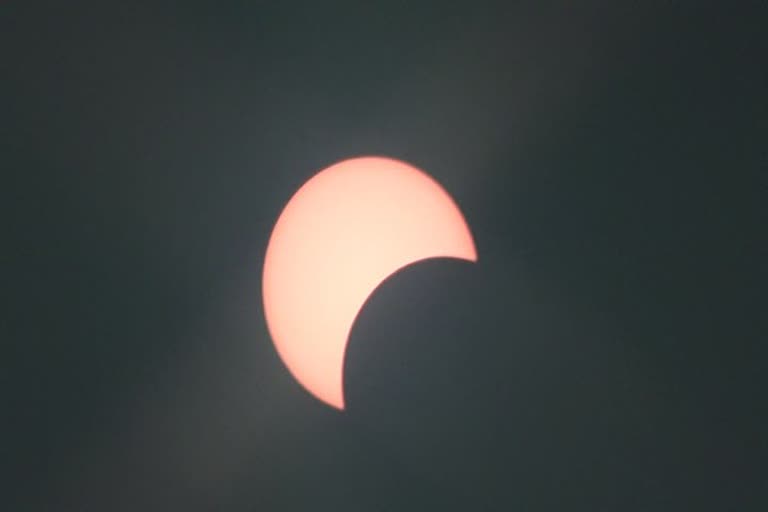Bengaluru: As thick passing monsoon clouds played hide and seek with partial solar eclipse over this tech city, hundreds of people observed the celestial event in awe despite poor visibility on Sunday.
"The partial solar eclipse occurred from 10.12 a.m. to 1.31 p.m., with 36 per cent maximum visibility at 11.47 a.m. despite clouds playing truant during the 3-hour-long event," state-run Jawaharlal Nehru Planetarium Director Pramod Galgali told a news agency here.
As public viewing was not allowed in the planetarium complex in the city centre due to Covid-induced lockdown restriction on large gathering, the eclipse was streamed live, which led to the institute's website www.taralaya.org hanging for long, as thousands of people logged in to watch the event in the virtual world.
"Though we could not allow public to watch the eclipse from the planetarium ground due to lockdown curb, we have recorded it for study and analysis and arranged to showcase it live on social media platforms like Facebook and Youtube channel," Galgali said.
Also read:Solar Eclipse 2020 LIVE Updates: India witnesses 'ring of fire' today
The natural phenomenon occurred across the sub-continent as sun, moon and earth came in a straight line to form the deepest annular solar eclipse.
"As eclipsing sun should not be seen without protective and safety equipment, the event was shown live for people to view it from their home," said Galgali.
The planetarium also has arranged a pair of goggles for Rs 35 for the public to view the eclipse safely from the rooftop of their home.
The last solar eclipse over this tech city was viewed on December 26, 2019, when about 90 per cent of the sun's disc was covered by the passing moon.
